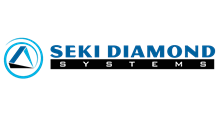
December 1 - 6, 2024
Boston, Massachusetts
Symposium Supporters
2024 MRS Fall Meeting & Exhibit
EN06.05.03
Designing an electrochemical acid-base generator with high current efficiency and low energy cost is challenging. Following investigations of the crossover rates of protons and hydroxide ions through ion-exchange membranes, we designed a multichambered electrochemical cell for generating weak acid and strong base. By optimizing the center chamber with a well-designed flow field, we achieved acid-base production at high concentrations (> 1M) and high Coulombic efficiency (> 94%) while maintaining relatively low energy costs (100 – 289 kJ mol−1, at 20 – 200 mA cm−2). With this device, we have demonstrated practical carbon management in simulated flue gas capture, direct air capture, and green production of slaked lime, as one step toward green cement production.
The key components of our prototype can be adapted for use in other electrochemical cell designs, ensuring high efficiency in concentrated acid-base utilization in other application scenarios. For example, management of the pH-difference and the acid-base crossover inside electrochemical systems is also crucial in pH-decoupling aqueous redox flow batteries, enabling the cell to achieve higher cell voltages and correspondingly higher energy densities, as well as supporting a broader range of redox pair combinations.
High Efficiency Acid-Base Generator for Carbon Management
When and Where
Dec 4, 2024
2:15pm - 2:30pm
2:15pm - 2:30pm
Hynes, Level 3, Room 307
Presenter(s)
Co-Author(s)
Dawei Xi1,Zheng Yang1,Michael S. Emanuel1,Michael Aziz1
Harvard University1
Abstract
Dawei Xi1,Zheng Yang1,Michael S. Emanuel1,Michael Aziz1
Harvard University1
Carbon dioxide capture is a critical technology for achieving carbon neutrality and mitigating the impacts of global warming. One promising approach involves electrochemical generation of concentrated acid and base. This effectively decouples the carbon capture-release process from the electrochemical cell, avoiding the kinetic limitations associated with reactions involving CO2.Designing an electrochemical acid-base generator with high current efficiency and low energy cost is challenging. Following investigations of the crossover rates of protons and hydroxide ions through ion-exchange membranes, we designed a multichambered electrochemical cell for generating weak acid and strong base. By optimizing the center chamber with a well-designed flow field, we achieved acid-base production at high concentrations (> 1M) and high Coulombic efficiency (> 94%) while maintaining relatively low energy costs (100 – 289 kJ mol−1, at 20 – 200 mA cm−2). With this device, we have demonstrated practical carbon management in simulated flue gas capture, direct air capture, and green production of slaked lime, as one step toward green cement production.
The key components of our prototype can be adapted for use in other electrochemical cell designs, ensuring high efficiency in concentrated acid-base utilization in other application scenarios. For example, management of the pH-difference and the acid-base crossover inside electrochemical systems is also crucial in pH-decoupling aqueous redox flow batteries, enabling the cell to achieve higher cell voltages and correspondingly higher energy densities, as well as supporting a broader range of redox pair combinations.
Symposium Organizers
Patrick Cappillino, University of Massachusetts Dartmouth
Aaron Hollas, Pacific Northwest National Laboratory
Pan Wang, Westlake University
Xiaoliang Wei, Purdue University
Symposium Support
Silver
Neware Technology LLC Bronze
Zhejiang ERG Energy Co., Ltd.
Neware Technology LLC Bronze
Zhejiang ERG Energy Co., Ltd.
Session Chairs
Song Jin
Xiaoliang Wei




